Click on images to enlarge
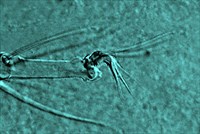
Fig. 1. Tetranychus ludeni adult female (non-type) - detail of empodium IV.
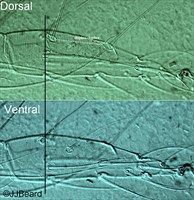
Fig. 2. Tetranychus ludeni adult female (non-type) - detail of tarsus I showing zero proximal setae.
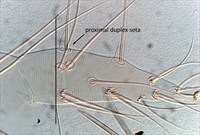
Fig. 3. Tetranychus ludeni adult female (non-type, Japan) - detail of tarsus I showing zero proximal setae.
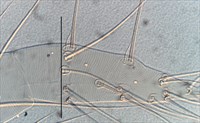
Fig. 4. Tetranychus ludeni adult female (non-type, Japan) - detail of tarsus I showing zero proximal setae.
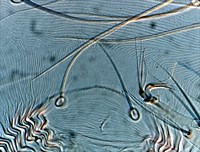
Fig. 5. Tetranychus ludeni adult female (non-type, Japan) - detail of pattern of pregenital striae.
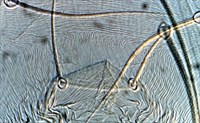
Fig. 6. Tetranychus ludeni adult female (non-type, Japan) - detail of pattern of pregenital striae.
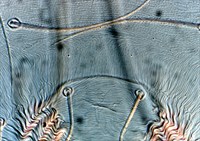
Fig. 7. Tetranychus ludeni adult female (non-type, Spain) - detail of pattern of pregenital striae.
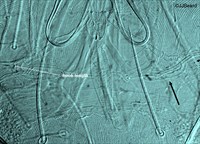
Fig. 8. Tetranychus ludeni adult female (non-type) - detail of peritreme (arrow indicates the hook).
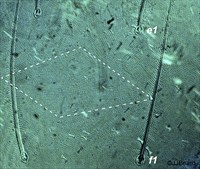
Fig. 9. Tetranychus ludeni adult female (non-type) - detail of the pattern of dorsal striae between setae e1 and f1.
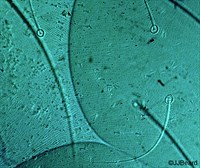
Fig. 10. Tetranychus ludeni adult female (non-type) - detail of ventral striae showing lobes.
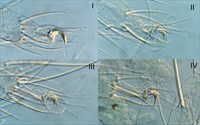
Fig. 11. Tetranychus ludeni adult male (non-type; Australia) - detail of empodia I-IV.
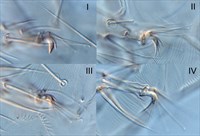
Fig. 12. Tetranychus ludeni adult male (non-type; Spain) - detail of empodia I-IV.
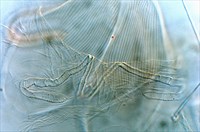
Fig. 13. Tetranychus ludeni adult male (non-type; Spain) - detail of peritreme.

Fig. 14. Tetranychus ludeni adult male (non-type; Australia) - detail of the pattern of striae on prodorsum (arrows indicate peritremes).
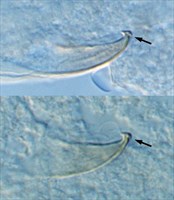
Fig. 15. Tetranychus ludeni adult male (non-type; Australia) - detail of the aedeagus (two different individuals) (arrows indicate false posterior hook).
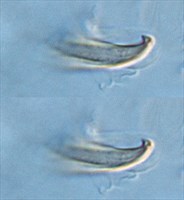
Fig. 16. Tetranychus ludeni adult male (non-type; Spain) - detail of aedeagus (same individual).
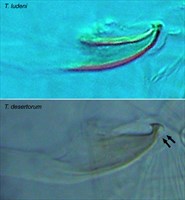
Fig. 17. Tetranychus ludeni adult male (non-type; Australia) and T. desertorum (non-type; USA) - comparing detail of aedeagus with T. desertorum which has a hook on the knob.
Material examined
non-types
Taxonomy
Subfamily Tetranychinae
Tribe Tetranychini
Common Name
-
Bean spider mite
-
European red mite
-
Red spider mite
Distribution
+Australia, Algeria, Argentina, Brazil, Canary Islands, Chile, China, Colombia, Cook Islands, Costa Rica, El Salvador, Fiji, France, French Polynesia, *Germany, Greece, Hawaii, Honuras, India, Iraq, Japan, Kenya, Madagascar, Madeira Island, Malawi, Mauritius, Mexico, Morocco, Mozambique, New Caledonia, New Zealand, Nicaragua, Paraguay, Portugal, South Africa, Spain, Swaziland, Taiwan, Thailand, USA, Venezuela, Zambia, Zimbabwe
Taxonomy Changes
Tetranychus ludeni Zacher 1913
Epitetranychus ludeni (Zacher) Zacher 1921
Tetranychus ludeni Zacher, Pritchard & Baker 1955
Tetranychus salviae Oudemans 1931, synonymy Pritchard & Baker 1955
Septanychus deviatarsus McGregor 1950, synonymy Pritchard & Baker 1955
Diagnosis
Female
Male
Hosts
> 250 recorded species of host plants including: Abelmoschus esculentus, Abutilon darwinii, A. indicum, A. molle, A. sellovianum (Malvaceae), Acalypha macrostachya, A. marginata, A. wilkesiana (Euphorbiaceae), Ageratum conyzoides, A. houstonianum (Asteraceae), Apium graveolens (Apiaceae), Aristolochia macrophylla (Aristolochiaceae), Artemisia stelleriana (Asteraceae), Artocarpus indica (Moraceae), Bidens pilosa (Asteraceae), Brassica campestris, B. oleracea, B. rapa(Brassicaceae), Brugmansia candida (Solanaceae), Cajanus cajan (Fabaceae), Capsicum sp. (Solanaceae), Carica papaya (Caricaceae), Citrus limon, C. paradisi (Rutaceae), Cocos nucifera (Arecaceae), Convolvulus arvensis (Convulvulaceae), Corchorus olitorius, C.tridens (Tiliaceae), Cosmos bipinnatus (Asteraceae), Crotalaria gorensis (Fabaceae), Cucumis melo, C. sativus, *Cucurbita sp., Cucurbita maxima, C. pepo (Cucurbitaceae), Dahlia sp. (Asteraceae), Datura arborea, D. stramonium (Solanceae), Desmodium ospriotreblum (Fabaceae), Euphorbia cyathophora, E. pulcherrima (Euphorbiaceae), Ficus carica (Moraceae), Fragaria vesca (Rosaceae), Giegera passerinoides (Rutaceae), Gerbera jamesonii (Asteraceae), Glycine max, G. soja (Fabaceae), Gossypium barbadense, G. herbaceum, G. hirsutum, Hibiscus mutabilis, H. rosa-sinensis, H. syriacus (Malvaceae), Ipomoea arachnosperma, I. batatas, I. carica, I. fistulosa, I. purpurea (Convolvulaceae), Lantana camara, L. mortiziana, L. trifolia (Verbenaceae), Luffa acutangula, L. cylindrica (Cucurbitaceae), Lupinus albus (Fabaceae), Malus domestica (Rosaceae), Malva parviflora, M. sylvestris (Malvaceae), Manihot esculenta (Euphorbiaceae), Medicago sativa (Fabaceae), Mentha piperita (Lamiaceae), Mucuna pruriens (Fabaceae), Musa sp. (Musaceae), Oxalis corymbosa (Oxalidaceae), Passiflora spp. (Passifloraceae), Phaseolus bracteatus, P. coccineus, P. lunatus, P. vulgaris (Fabaceae), Physalis angulata, P. micrantha, P. peruviana (Solanaceae), Prunus armeniaca, P. avium, P. domstica, P. persica, Pyrus communis (Rosaceae), Ricinis communis (Euphorbiaceae), Salvia officinalis, *S. splendens (Lamiaceae), Sechium edule (Cucurbitaceae), Senecio cruentus, S. inaequidens, S. rosmarinifolius (Asteraceae), Solanum ferrugineum, S. melongena, S. nigrum, S. paniculatum, S. quitoense, S. saponaceum, S. torvum, S. tuberosum (Solanaceae), Tagetes erecta, T. minuta (Asteraceae), Tecoma stans (Bignonicaceae), Thunbergia alata (Acanthaceae), Trifolium repens (Fabaceae), Ulmus procera (Ulmaceae), Verbena bonariensis, V. litoralis, V. rigida, V. petiolaris (Verbenaceae), Vigna marina, V. radiata, V. unguiculata, V. vexillata (Fabaceae), Viola cornuta (Violaceae), Vitis vinfera (Vitaceae), Xanthium pungens, X. spinosum (Asteraceae)
Similar Taxa
Tetranychus desertorum Banks 1900; and often misidentified in field as T. urticae. For example, a taxonomic survey of spider mites of New Zealand revealed than many specimens previously identified as T. cinnabarinus (now T. urticae) were in fact T. ludeni (Zhang 2002).
Biology
This species has been recorded as a pest of many crops, sometimes requiring management through pesticide application or biocontrol agents. In Queensland and NSW it is an important pest of cotton, beans and strawberry. Gerson (2003) lists this species as a minor pest of citrus.
References
Gerson, U. (2003) Acarine pests of citrus: overview and non-chemical control. Systematic and Applied Acarology 8:3-12
Manson, D.C.M. (1967) The spider mite family Tetranychidae in New Zealand. II. The genus Tetranychus. Acarologia 9: 581-597
McGregor, E.A. (1950) Mites of the family Tetranychidae. American Midland Naturalist 44: 257-420
Migeon, A. and Dorkeld, F. (2006-2017) Spider Mites Web: a comprehensive database for the Tetranychidae. http://www.montpellier.inra.fr/CBGP/spmweb
+Miller, L.W. (1966) The tetranychid mites of Tasmania. Papers and Proceedings of the Royal Society of Tasmania 100: 53-76
Oudemans, A.C. (1931) Acarologische Aateekeningen CVII. Entomol. Ber., Amst. 8: 221-236
Pritchard, A.E. and Baker, E.W. (1955) A revision of the spider mite family Tetranychidae. Pacific Coast Entomology Society Memoirs 2: 1-472
*Zacher, F. (1913) Untersuchengen uber Spinnmilben. Mitt. Kais. Bio. Anst. Land-Forst. 16: 19-25
Zacher, F. (1921) Neue und wenig bekannte Spinnmilben. Z. Angew. Entomol. 7: 181-187
Notes
This species can be confused with T. desertorum. The aedeagus of T. ludeni has a ridge running lengthways along the aedeagus shaft to the knob that creates the illusion of a posterior projection similar to that of T. desertorum. Tetranychus ludeni has no posterior projection on the aedeagus.
Copyright © 2018. All rights reserved.